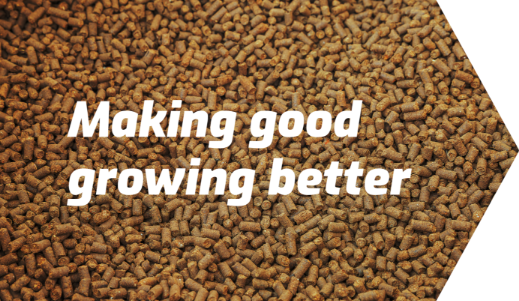
Carbon and Microorganisms working together
- Posted: Aug 19, 2021
- Author: Nature Safe
- Turf
There are a staggering number of living organisms on planet Earth, and while they may vary greatly in their particular characteristics, one thing they all have in common is that they require carbon to exist.
Plant life in particular is heavily dependent upon this ubiquitous element, as the chemical compound carbon dioxide (CO2) is required to carry out the process of photosynthesis. Carbon is naturally present in our atmosphere (which is comprised of roughly 0.04% CO2), but the most abundant source of carbon are the billions of microorganisms that inhabit the Earth’s soil, rocks and oceans.
The microorganisms found in the soil are responsible for breaking down organic matter of all kinds (e.g., grass roots, plant parts, animal tissues, stolon, etc.) in a process known as biodegration. As this degraded organic material (known as humus) is being formed, microorganisms consume a large portion of the decomposed carbon to receive vital energy for growth, and they release the remaining carbon into the atmosphere in the form of CO2.
Respecting the cycle
This process of ingesting and releasing vital nutrients into the soil is an ongoing cycle, but a crucial step in the process is a phenomenon known as immobilization. This basically describes a “time-release” aspect of the cycle, where carbon and other mineral nutrients are basically withheld from the plant until the microbe dies. At the end of the microbe’s life cycle, these nutrients are released through a complex process known as mineralization, where inorganic matter is converted to organic matter. During this phase of the process, nitrogen is also needed in order to properly utilize the carbon that has been made available.
The ratio of carbon to nitrogen (expressed as C:N) will determine how slowly or quickly organic matter will decompose. Microorganisms in particular have a low C:N ratio (typically 10:1), which means that their decomposition process is very quick due to possessing relatively high amounts of nitrogen. By contrast, organic matter such as straw decomposes slowly, as it has a C:N ratio of only 100:1, representing a very low amount of nitrogen in relation to carbon content.
It is estimated that microorganisms are comprised of up to 50 per cent carbon, which means that they require a steady supply of this vital element in order to survive. While all microorganisms engage in the process of converting carbon into an energy source, they are categorized into one of two groups based on the method by which they accomplish this process.
The first group, known as autotrophs, derive their energy from either sunlight or the oxidation of inorganic matter, whereby they can convert CO2 into a usable form of carbon. The majority of autotrophic organisms engage in the process of photosynthesis, by which they use energy from the sun in order to produce food.
Heterotrophs, on the other hand, require a pre-existing source of organic nutrients to convert carbon and other biomaterials into energy. Some of the most abundant microorganisms in the world, including bacteria, fungi and actinomyces, are heterotrophic. They obtain carbon through energy sources such as cellulose, sugar and starch, all of which are found in decomposing plant and animal tissues. These organic materials accumulate in the soil to form humus, which has a soft, spongy consistency that is perfect for retaining moisture and improving soil texture. Humus acts as the “storage facility” for water and nutrients, retaining these vital food sources until the microorganism needs them.
Protecting your turf
By using Nature Safe, you are ensuring the health of your turf by equipping it with all of the organic materials the soil needs to facilitate this all-important give-and-take relationship between carbon and the billions of microorganisms found in the soil.
And, because we’re the only organic fertilizer company that controls and sources the basic ingredients from beginning to end, Nature Safe offers a reliable, consistent product to address all challenges facing your turf. Check out our complete line of organic and fortified organic fertilizers to find the right fit.
Thank you for reading our blog! Sign up and we’ll email the next one directly to you.
